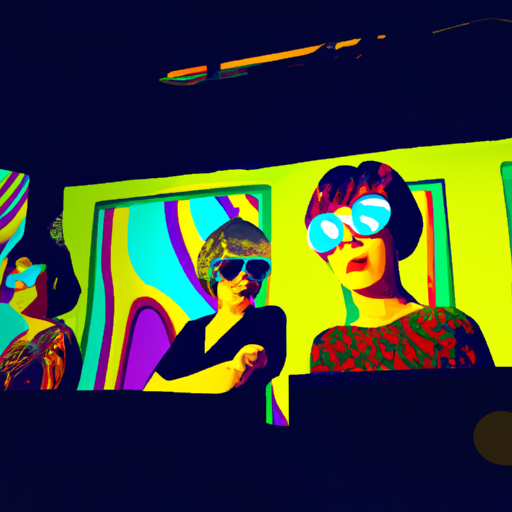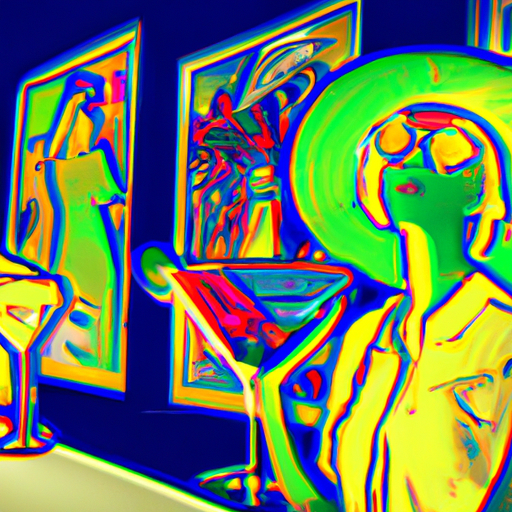
-
Table of Contents
- Creating Immersive Illustrated Environments for Events
- The Power of Immersive Environments
- Benefits of Using Illustrations in Event Environments
- Case Studies: Successful Examples of Immersive Illustrated Environments
- How to Create Immersive Illustrated Environments
- 1. Define the Event Objectives
- 2. Collaborate with Illustrators
- 3. Incorporate Branding Elements
- 4. Consider the Event Space
- 5. Test and Iterate
- Key Takeaways
Creating Immersive Illustrated Environments for Events

Events are a powerful way to engage and connect with an audience. Whether it’s a conference, trade show, or product launch, creating an immersive environment can leave a lasting impression on attendees. One effective way to achieve this is through the use of illustrations. In this article, we will explore the benefits of creating immersive illustrated environments for events and provide valuable insights on how to do so.
The Power of Immersive Environments
Immersive environments have the ability to transport attendees to a different world, capturing their attention and creating a memorable experience. By incorporating illustrations into these environments, event organizers can enhance the immersive effect and create a unique atmosphere that aligns with the event’s theme or message.
Illustrations have a way of evoking emotions and sparking imagination. They can be used to tell a story, set a mood, or convey complex ideas in a visually appealing manner. When used strategically, illustrations can captivate attendees and make the event more engaging and memorable.
Benefits of Using Illustrations in Event Environments
1. Visual Impact: Illustrations have a strong visual impact that can instantly grab the attention of attendees. They can be used to create eye-catching backdrops, signage, or installations that set the tone for the event and create a sense of anticipation.
2. Branding and Identity: Illustrations can be customized to reflect the brand identity and values of the event. By incorporating brand colors, logos, and key messages into the illustrations, event organizers can reinforce their brand image and create a cohesive visual experience.
3. Storytelling: Illustrations have the power to tell a story in a way that words alone cannot. They can be used to guide attendees through a narrative, introduce key concepts, or showcase the journey of a product or service. By weaving illustrations into the event environment, organizers can create a cohesive and immersive storytelling experience.
4. Versatility: Illustrations can be used in a variety of ways to enhance the event environment. They can be printed on banners, backdrops, or floor decals, or projected onto screens or walls. This versatility allows event organizers to create a visually stunning environment that suits their specific needs and budget.
Case Studies: Successful Examples of Immersive Illustrated Environments
1. Adobe MAX: Adobe MAX is an annual conference that brings together creative professionals from around the world. In 2019, Adobe created an immersive illustrated environment that transformed the conference venue into a vibrant and interactive space. The event featured large-scale illustrations that covered the walls, floors, and even the ceilings. These illustrations showcased the work of talented artists and created a visually stunning backdrop for the conference sessions and networking areas.
2. Google I/O: Google I/O is Google’s annual developer conference. In 2018, Google used illustrations to create an immersive environment that reflected their brand identity and showcased their latest technologies. The event featured colorful illustrations that were projected onto screens and walls, creating a dynamic and visually engaging experience for attendees. These illustrations not only added visual interest but also helped to communicate complex technical concepts in a more accessible way.
How to Create Immersive Illustrated Environments
Creating an immersive illustrated environment for an event requires careful planning and execution. Here are some steps to consider:
1. Define the Event Objectives
Before diving into the creative process, it’s important to clearly define the objectives of the event. What message do you want to convey? What emotions do you want to evoke? Understanding the goals of the event will help guide the illustration process and ensure that the final result aligns with the event’s purpose.
2. Collaborate with Illustrators
Working with professional illustrators is key to creating high-quality illustrations that resonate with the audience. Collaborate with illustrators who have experience in creating immersive environments and understand the event’s objectives. Provide them with a clear brief that outlines the event theme, key messages, and any specific requirements or constraints.
3. Incorporate Branding Elements
Integrate branding elements into the illustrations to reinforce the event’s identity. This can include using brand colors, logos, or typography. By incorporating these elements, the illustrations will not only enhance the immersive environment but also strengthen the overall brand presence.
4. Consider the Event Space
Take into account the event space when designing the illustrations. Consider the size and layout of the venue, as well as any architectural features that can be incorporated into the illustrations. By tailoring the illustrations to the event space, you can create a seamless and immersive experience for attendees.
5. Test and Iterate
Once the illustrations are created, it’s important to test them in the event space. This will allow you to identify any potential issues or areas for improvement. Make adjustments as necessary to ensure that the illustrations create the desired immersive effect.
Key Takeaways
- Creating immersive illustrated environments for events can enhance the attendee experience and leave a lasting impression.
- Illustrations have a strong visual impact and can be used to tell a story, reinforce branding, and create a unique atmosphere.
- Successful examples of immersive illustrated environments include Adobe MAX and Google I/O.
- To create an immersive illustrated environment, define event objectives, collaborate with illustrators, incorporate branding elements, consider the event space, and test and iterate.
By incorporating illustrations into event environments, organizers can create a visually stunning and immersive experience that captivates attendees. The power of illustrations lies in their ability to evoke emotions, tell stories, and enhance the overall atmosphere of an event. By following the steps outlined in this article and drawing inspiration from successful examples, event organizers can create memorable and impactful experiences that leave a lasting impression on attendees.
